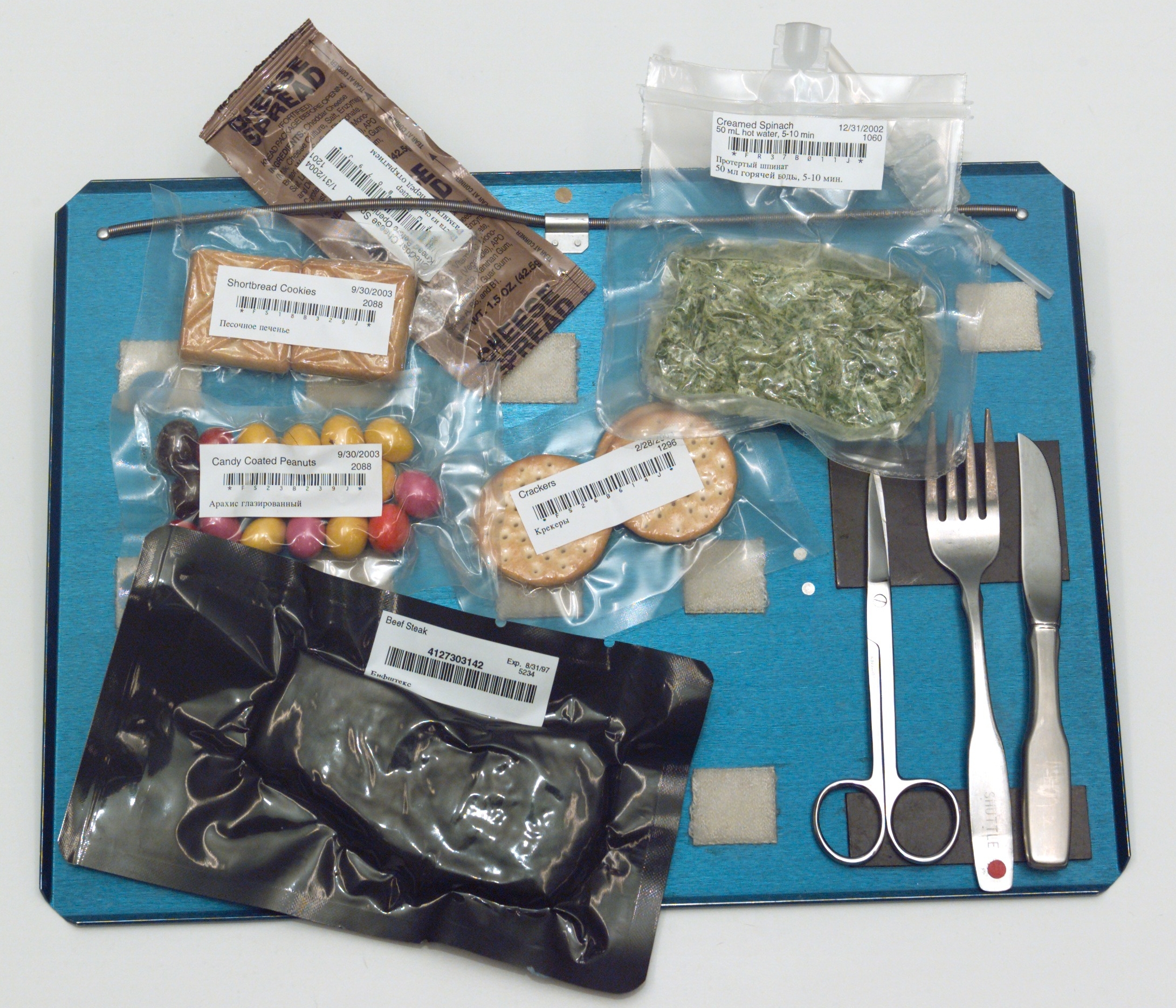Posted by Nils Norén
One of the biggest problems with the term Molecular Gastronomy, apart from it not sounding delicious, is that it does not give a fair picture of someone’s cuisine. For example, when I was the Executive Chef at Aquavit, I used quite a few newer techniques. A lot of the times, when I would discuss these techniques with the press or others, they would immediately say “so you are a MG chefâ€. NO!!!!!!!!!!!! I cooked Scandinavian food and just happened to use some newer techniques in order to get a better and more consistent result. That is the only thing I am interested in.
New techniques and technology are constantly being introduced to the kitchen. (Blender, anyone?) In recent years a lot more new technologies, ingredients, and knowledge have become available to chefs. I think chefs have a responsibility to look at these things, whether they choose to adopt them or not. Is there something out there that will improve my food? I don’t think this has anything to do with the term MG. It makes absolutely no sense to label chefs using new and different techniques, ingredients, and knowledge as a Molecular Gastronomists. I would say that most top restaurants in the world have adapted one or more new techniques that are being used to make great food. Just imagine if the term molecular was used in other fields to describe someone’s work who uses modern techniques and technology. Molecular art, molecular music, molecular architecture—doesn’t sound so good, does it?
Another misfortune of being labeled a MG chef is that it can turn customers away. They have the misconception that all dishes are coming with a foam or a gel. They also think that the meal is going to be “fuzzy.” A lot of us know it will not be, but the press including certain food critics, keeps that notion alive.

Most chefs that have been labeled as MG chefs have nothing to do with each other. Their food is so very different. That is another reason why MG is a bad term to label a restaurant’s food. I think we already have plenty of labels that we can use, e.g., ethnic, contemporary, or progressive. That is, if we really feel a need to label the restaurant in the first place.
As chefs we are, hopefully, in pursuit of deliciousness. And we are also in the business of selling our product. I don’t think being slapped with the label MG is going to benefit any restaurant in the long run. It might hurt restaurants—causing them to be seen as a fad. Quite frankly, I don’t think either the word Molecular or the word Gastronomy should be associated with describing any restaurant’s cooking. If someone wants to describe work they do outside a restaurant as MG, I am not opposed to that. But restaurants are serving dishes to diners and the food on those plates deserves a better fate and a better term, from a sales standpoint, than MG.


>>But restaurants are serving dishes to diners and the food on those plates deserves a better fate and a better term, from a selling standpoint, than MG.<<
I think what you should break out is the use of additives. I am not keen on eating transglutaminase and friends to be honest. I don't mind the vacuum suck or rotovap or fuge. I also don't mind thinking I bite into a bagel and then it's ice cream. But additives is something I like to stay away from and cuisine making use of it should be labeled as such.
Above:
– Spinach vacuum infused with cream
– Cheese fluid gel
– Unbaked compressed brown butter “Short Bread Cookiesâ€
– 24 hour steak “en sous videâ€
– “M&Ms†– “spherical” colored simple syrup with liquid peanut centers
– Crackers vacuum infuse with sesame oil
Plating could use some work.
Or at least that new Sous needs to be told you should take the stuff out of the bags first.
I hate labels. After all, it’s all about good food!
JK… define where the line is drawn for what you call ‘additives.’ Cornstarch? Flour? Gelatin? Spices?
Would you please line out what your definition is. Is is anything that isn’t plucked straight from the ground or ripped off it’s four legs?
This is as futile as trying to discern what is ‘natural’ or not.
What about sugar… is anything else processed to such an extent?
About 99% of what you call additives are derived straight from seaweed, seeds, roots, starches, or fermentation of microbes… sounds pretty natural to me.
That is not easy to define for me, I don’t know enough about the topic to draw that line. I do enough though that I want a line for myself. I don’t want anything process manufactured or modified ingredients that are sold like chemicals. Also, if it says “do not swallow” on the box, the warnings on transglutaminase label are scary and even if considered safe I don’t want anything like this in my food.
What is the point of a shrimp noodle when MCD does the same thing with their chicken mac nuggets for years? (I don’t want to diss Wylie, I ate his tasting menu recently and enjoyed every bite)
Let’s put it this way, if I can buy an additive at wholefoods or a farmers market I am OK with it. If it is coming from a lab supply store, I skip. I like labeling for that.
I love the extreme comparisons of the pictures!
I think people are afraid of the term GM is due to lack of understanding and knowledge. May be simply explaining things in layman’s term is best.
We need to embrace technologies and techniques, but we also need to remember the famous quote “We are what we eat”.
Maybe many of these ‘additives’ that you would consider ‘unsafe to eat’ are not available at Whole Foods in their pure forms, but I would wager I could find every single one listed on some ingredient lable within the store… my first glance at a Ben & Jerry’s ice cream label sold there contains guar gum, soy lecithin, and carageenan… of course, that’s just at first glance. There are thousands of foodstuffs within the store.
Whole Foods is funny. They sell straight xanthan gum (because vegans and gluten-free bakers need it). They also sell agar (and I believe carageenan) because they are traditional ingredients. They won’t sell products with msg, but they DO sell straight glutamic acid in the vitamin aisle (who knows if its in its sodium salt form ha ha). They don’t sell products cured with nitrites, even though the process is completely traditional and has been used for hundreds of years (thousands if you include the use of natural salts with nitrite impurities. Our ancestors knew which salts cured best), but DOES allow the use of celery extracts concentrated to the point that their nitrite levels are sufficent to provide bacon’s proper taste and anti-bacterials properties. Go figure.
Nils,
it’s interesting to note that your standpoint seems in fact to coincide with one of the founding fathers og MG, Hervé This. His opinion is indeed that MG is NOT something that is done in a restaurant, because MG is indeed a science. And in restaurants you’re not served science but food, preferably delicious food. However, a chef might very well adopt knowledge from MG to develop his or her cooking. I tend to agree. Unfortunately, MG has been made a label in which someone do want, and others don’t want, to be associated with. Look up Hervé’s writings on molecular gastronomy vs molecular cooking for first hand info (i.e. in his blog, a simple web search will bring it up). Also, there was a somewhat heated debate on the molecular gastronomy google discussion group at some point last year or so.
sorry. The last comment should probably be in the previous MG-discussion post. Simply a result of me starting to read the blog from the top (the most recent posts first). Embarrassing… Anyway, great blog. Apparently, I have to kick out some other blog from my regular to-read list
Clearly there is much more to “MG food” than simply the use of technology. All you have to do is look at Keller’s “Under Pressure” book, and you can see dishes that are, for example, made of bacon and rabbit flap layered together, bound with Activa and cooked sous vide, or fennel cooked sous vide with Pernod and a herb sachet. And yet, it seems clear to me that no one would describe the cuisine at French Laundry/Per Se as “molecular gastronomy.”
What there seems to be in the MG movement is a certain range of shared aesthetics around which the chefs working in this style cohere. I would suggest that one element of this aesthetic is the use of technology to produce overtly novel and heretofore unachievable effects, and often with the goal of challenging the diners’ paradigm of the dining experience.
Like many things, it is hard to define what is MG other than to rigorously apply the Justice Potter Stewart Standard. My general rule of thumb is that if it seems like “regular food” and is presented within the traditional Western paradigm of cuisine and dining, then it is not MG. The dish you served at the Taste of NY event, which I tried, did not strike me as MG, despite the fact that some advanced techniques were used to produce it. However, were that same dish served within the context of an Alinea-like meal, then it becomes MG by virtue of the context.
I think people are lost in what molecular gastronomy is doing and will eventually do. For years the products you buy in grocery isles have all these strange things in them and nobody seemed to care too much about this, even fast food restaurants have incorporated preservatives and “MG” ingredients and techniques for years. I think most chefs using this style have more control on what they put in. Like Agar agar for example is healthier for you than gelatin. It comes for seaweed and the other from pig fat. I feel that most people in north-america are either lazy or clueless on food and farming. Julia child brought french style here but forgot that most people in france care about where there food comes from first not just some shit on a plate that looks pretty.